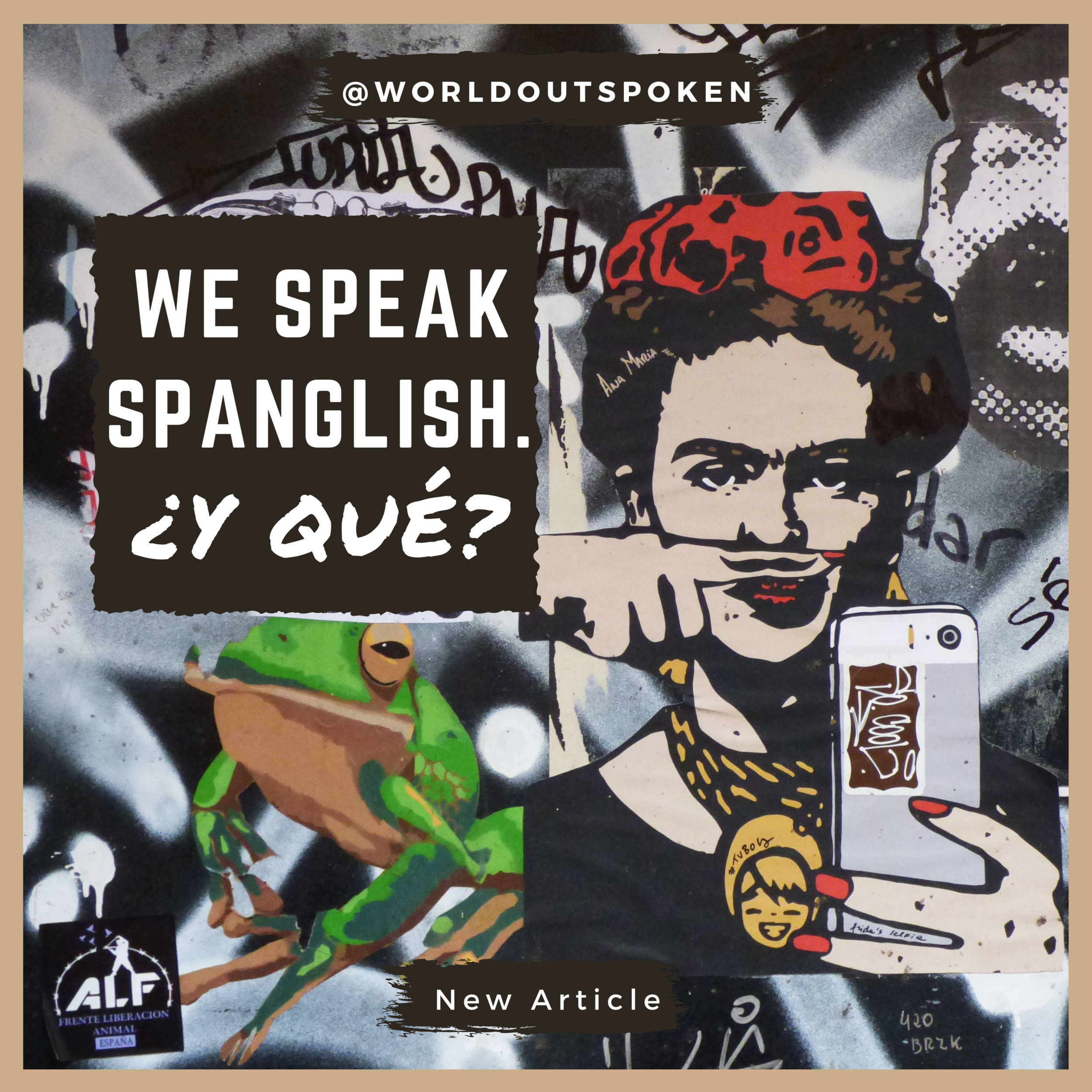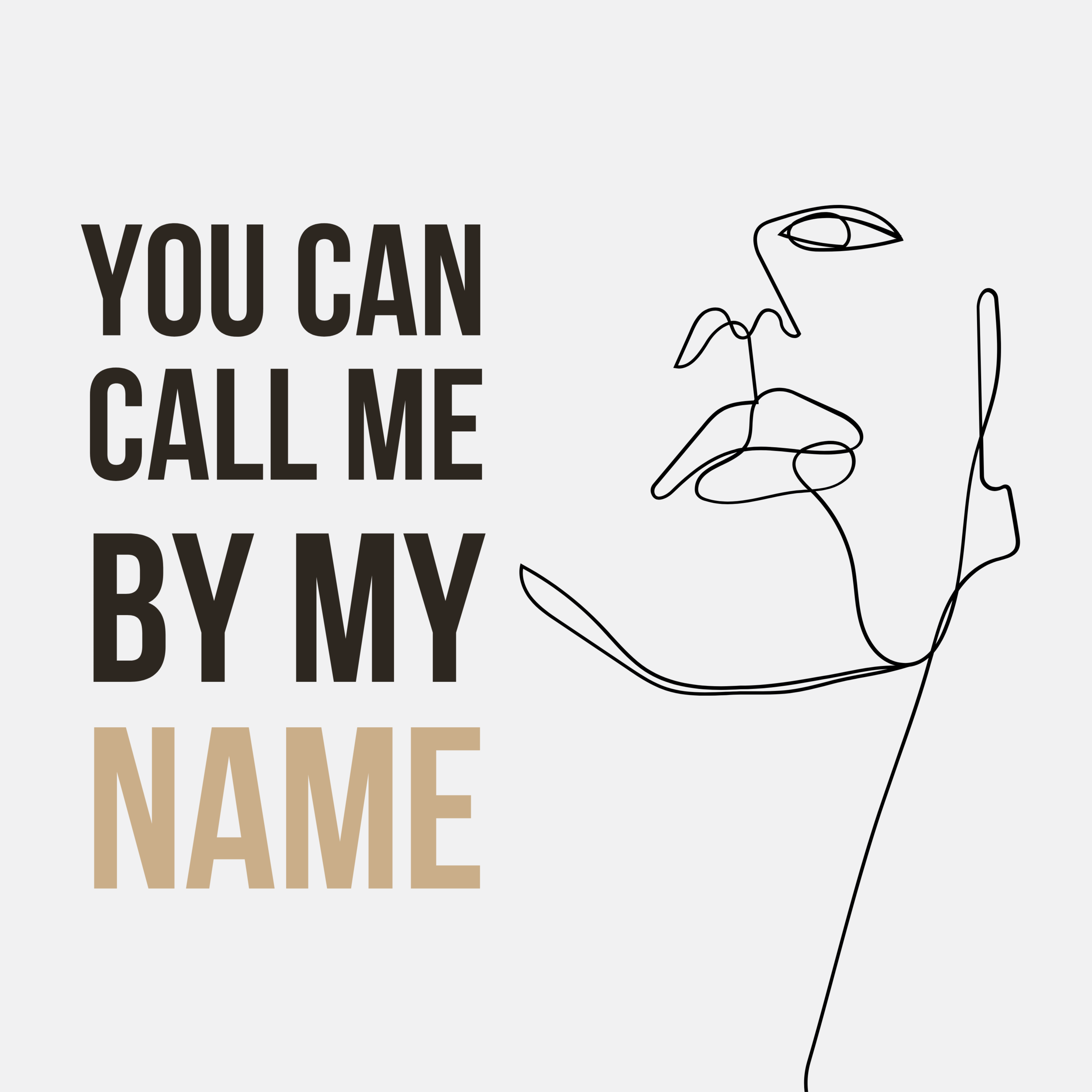El Español in the US: Memoria and Resistance
Me inculcaste el odio hacia mi idioma. El español lo rechazaste, como peste lo valoraste. El inglés lo alabaste, como lengua suprema lo elevaste. I don’t need Spanish, I told my mother and it pierced her heart. I’m American, le repetí, American, le grité. Mr. Smith’s words echoed in me: “English only, Juan. Spanish will deform your lips and rot your tongue.” Petrified, el inglés abracé y solo a él, me aferré. Now, I’m in Spanish class undoing the trauma and writing en español.[1]
“Speak English, we’re in America!” he told my aunt in a demanding tone. He was a passerby and her Spanish words were not being directed at him. “Y usted, ¿qué le dijo?” I asked my aunt incredulously. “Nada, mija. Hay muchos como él,” she replied. She was right. English-only discourses have been disseminated for centuries in the U.S. In the early 1900s, President Theodore Roosevelt stated, “We only have room for one language in this country, and it is English.” In 1998, California passed the infamous Proposition 227 that would eliminate bilingual education. Despite the fact that California has one of the most abundant populations of non-native English speakers in the country, it took almost twenty years for Proposition 227 to be repealed. In 2015, Donald Trump criticized former Florida Governor Jeb Bush for speaking in Spanish: “He’s a nice man. But he should really set the example by speaking English while in the United States.” The direct implication of President Trump’s assertion was that monolingual English speakers are nice and Spanish speakers are, well, not nice. The ease to which people can record everything on their smartphones has exposed numerous incidents across the country of individuals berating others on the basis of language use and the demand that only English be spoken. In 2019, a substitute teacher in Texas was caught on camera as she told a student, “Speak English. We’re in America. Give me your phone.” In West Virginia, a customer told the manager of a Mexican Restaurant to “get the f*** out of her country” and demanded for him to speak English while in America. In Wisconsin, a woman verbally attacked a Puerto Rican family for listening to Spanish music while barbequing at a park. In New York City, where 48% of the population speaks a language other than English at home[2], a lawyer threatened to call immigration after he heard two women speak Spanish at a restaurant. These incidents are not uncommon occurrences caused by deranged individuals – they are the fruit of our nation’s racist history against brown people.
The insistence that Spanish should not be spoken in the U.S. is driven by anti-immigrant and racist beliefs that are historically inaccurate. Anti-Spanish language policies, discourses, and behaviors cannot be examined in isolation from white supremacy. The fact that English is the most commonly spoken language in the U.S. is indisputable, but the U.S. does not have an official language at the federal level. Anti-Spanish-language views are prompted, in part, by incorrect assumptions that Spanish is the language of foreign invaders. Spanish is not a foreign language, and in many parts of the U.S., it has a longer history than English.[3] In 1848, the Treaty of Guadalupe ended the Mexican-American War and the U.S. took over 55% of Mexico’s territory, which included present-day California, Arizona, New Mexico, parts of Nevada, Utah, and Colorado. In 1898, the Treaty of Paris ended the Spanish-Cuban-American War, making Puerto Rico a U.S. territory, and in 1917, the U.S. granted Puerto Ricans U.S. citizenship through the Jones Act. Spanish is a U.S. language. There are currently close to 53 million Spanish speakers in the U.S. There are more Spanish-speakers in the U.S. than in any other nation in the world, except for Mexico.[4] “Speak English, we’re in America” is, at its best, an ignorant declaration and at its worst, a hateful attempt to deny our existence.
You told me that if I spoke a little less Spanish you would love me, that if I looked a little more white, you would hug me. I masked my brownness, buried my language and still, you despise me. Jesus is light, Jesus is white! You color-coded my existence. Now, I’m in a dark place, a brave space.[5]
“With your head facing the wall, you would bend down and he [the teacher] would get a paddle and hit you in your bottom and it was hard enough that your head bounced against the wall,” recalls Irene Tovar, Executive Director of the Latin American Civic Association and alumna of Pacoima Elementary School in Los Angeles. The violation? Speaking Spanish, whether it be in the classroom or on the playground. This was not an isolated case in the 1960s-70s or one that created public outrage or civil suits. It was a common and accepted form of punishment for teachers to wash the mouths of their Spanish-speaking students with soap, hit them and verbally abuse them for uttering words in their home language. Latina/o children were explicitly taught through violent measures that Spanish was dirty, undesirable, unworthy and transgressive. The message communicated to them was that the language that their parents spoke was inferior and should be forgotten. The U.S. public education system taught Latina/o students to be ashamed of the Spanish language, literally beating it out of them. Traumatized by the abuse they had endured, when those students became parents, many of them made the conscientious decision to not pass on the language.
Despite the staggering amount of evidence that supports bilingualism, many well-intended teachers and administrators promote English monolingualism and discourage parents from speaking to their children in other languages. Fearing that their child will be confused, develop a stutter or language disorders, some families opt to not teach their children their home language, and by doing so, unknowingly, disadvantage them. Some of these myths were initially propagated by seemingly reputable studies that were deeply flawed. These studies compared the performance of monolingual students from privileged backgrounds to bilingual students from disadvantaged groups. Researchers concluded that the use of multiple languages was harmful and ignored socioeconomic vulnerabilities as a factor; they saw bilingualism, and not poverty, as the problem. Though these studies have long been debunked, they have persisted as truths, largely, because they support anti-immigrant and racist ideologies that believe brown bodies, and their languages, to be inferior.
“I don’t want my kids to speak with an accent,” was commonly said by Latina/o parents who did not teach their children Spanish. This statement was usually followed by, “because I don’t want them to be discriminated against.” In reality, we all have accents. Linguists define accent as a particular way of speaking distinctive of a specific nation, location, or individual. Therefore, it is impossible to speak without an accent. To Californians, individuals from New York, Texas and Chicago have accents, and vice versa. Irish and Australians might note the American accent of tourists and city folk will allude to the accent of rural people. Non-standard or undesirable accents in any given group are contextually determined. Jesus himself had a non-standard accent[6]. Despite the fact that everyone has an accent, not all accents are perceived to be equally acceptable. In the U.S., British and French accents are usually thought of as being sexy or sophisticated whereas Indian or Nigerian accents are discredited. The concern that children will be discriminated against for speaking with a non-accepted accent is valid and well-grounded. However, Latina/o children will also be discriminated against for looking brown, having a Spanish last name, or living in a certain neighborhood. We stopped teaching Spanish to our children as a protective strategy, as a survival mechanism disguised as choice. We sacrificed our descendants’ ability to speak with their own family in service of racist ideologies. We forcefully traded our ability to communicate with our familias in exchange for a little bit of acceptance from a system that does not recognize us as image-carriers. Acceptance that is based on negating parts of our identity, that asks us to hate ourselves and that demands us to sever ties with our communities is not acceptance, it is oppression.
Assimilation is a frail lifeline created by a racist system that confuses uniformity with unity. Assimilation demands us to inflict pain on ourselves as a rite of passage. Assimilation defies God’s creativeness and rejects the heavens described in Revelation: “After this I looked, and there was a great multitude that no one could count, from every nation, from all tribes and peoples and languages, standing before the throne and before the Lamb, robed in white, with palm branches in their hands” (7:9, NRSV). We are united by one true God, integrated into God’s kin-dom[7], but our differences are not erased, they are God-made, welcomed and celebrated.
Quería decirte sana, sana, colita de rana pero para protegerte te murmuré, everything will be ok. Quería darte un apapacho but instead, I gave you a hug. Quería que supieras que a Dios le hablamos de tú, que ‘extended family’ es inexistente y que el ‘si Dios lo permite’ y ‘con el favor de Dios’ forman parte de nuestro andar. Quería que el español no fuera background noise to you, como un eco atrapado en el olvido. They held a gun to our head and said, “give us your children’s Spanish or we will kill them.” Mijito, I couldn’t see you die. I gave them what they wanted. Quería que entendieras las palabras en este poema, quería que no te sintieras como foráneo en tu propia familia, quería que el abuelo te contara sus historias, pero también quería, quería que sobrevivieras…[8]
Visualize the following scenario: A Spanish speaker is walking to the store. She buys milk, hurriedly walks back to the house and answers a phone call. Who did you imagine? More specifically, what was the ethnic background of the person that you envisioned? It is highly likely that your visual reference was that of a Latina/o person. If you are Latina/o, you might’ve even pictured yourself or a family member. Languages are intrinsically associated to people groups and Spanish in the U.S. is immediately linked to Latin-American immigrants. The notion that a country has of a people group will directly impact their perception of the language spoken by that group of people.
“When white people speak Spanish, it’s a global skill. When Latinx people speak Spanish, it’s a threat to the country”
It is estimated that 50-70% of the world population is bilingual or multilingual.[9] In many parts of the world, including Asia, Latin America and Europe, multilingual education is the norm and the importance of languages is highly stressed. Many wealthy families even pay private language tutors and yet, in the U.S., where we are blessed to have the opportunity to be in community and learn from individuals of diverse linguistic backgrounds, we discourage bilingualism. However, bilingualism is not discouraged equally amongst all ethnic groups. People of color, specifically, are punished for their linguistic skills while white people are praised for their abilities. “Kylie La Gringa King” recently became a TikTok sensation for making videos in which she appears speaking Spanish, specifically a Mexican colloquial variety, while performing daily tasks. Her efforts are publicly applauded, and her Spanish is admired. Learning a new language is an arduous task and a profound undertaking. It takes dedication, humility, and courage to learn a new language and Kylie should be praised for her efforts but so should Alejandra, Natalia, José, and Ernesto. Instead, Latina/o people are discriminated against for speaking Spanish but also vilified by their own communities for not speaking it.
I was riding the bus with my best friend one afternoon when I asked a girl, who clearly looked Latina, a question in Spanish. “I don’t speak Spanish,” she responded, with a tone of exhaustion in her voice. My friend and I laughed at her and murmured, “esta quien se cree, si tiene el nopal en la frente.”[10] I vividly remember feeling annoyed and offended that another Latina girl would dare to pretend she didn’t know Spanish. Years later, as I sat in a college class unearthing my history, I felt the desperate impulse to find that girl on the bus and ask for her forgiveness.
Shame has persistently burdened the Latina/o community in the U.S. We have been put to shame for speaking Spanish and have also shamed each other for not speaking it or not speaking it as well as others think we should by virtue of the brownness of our faces. Humiliation is a terrible pedagogical strategy. If you are a Spanish speaker who desires to encourage other Latina/os to learn the language, do not humiliate them. Twenty-seven percent of the U.S.-Latina/o population does not speak Spanish at home (Pew Research Center 2015). Poet Melissa Lozada-Oliva, describes her relationship with Spanish as an “itchy phantom limb” that “is reaching for words and only finding air.”[11] Many heritage learners[12] are working tirelessly in Spanish classes and elsewhere to reconnect with the language. For U.S.-Latina/os, Spanish is not simply a global skill or a resume booster – it is the opportunity to reconnect with their loved ones in a deeper way; it is the possibility to understand the stories that shaped their families. Black U.S.-Mexican poet Ariana Brown expresses the emotional turmoil felt by Latina/o learners in Spanish class in a powerful poem titled, Dear White Girls in my Spanish Class: “What is it like to be a tourist in the halls of my shame? To not be expected to speak better than you do? How does it feel to take a foreign language for fun? To owe your history nothing?”[13]
El español es resistencia en este país. Learning or speaking Spanish while Latina/o is an act of resistance. Proving one’s Latinidad should not be the motivating factor behind learning Spanish. Teaching Spanish to future generations cannot be tied to issues of cultural authenticity or legitimacy and “linguistic ability should not be held against the diaspora’s children.”[14] However, speaking Spanish allows us to form deeper bonds with our communities; it enables us to explore parts of our heritage that can be illuminated more clearly under the light of the Spanish language and makes it possible for us to learn from our abuelitas’ theologies.
Me inculcaste el amor hacia mi idioma. El español abrazaste, como agua lo valoraste. El inglés lo aprendiste, como lengua adicional lo quisiste. I love learning Spanish, I told my mother and it warmed her heart. I’m a child of God, I said. Un hijo de Dios, I smiled. Yahweh’s words echoed in me: “All languages are beautiful, Juan. Spanish will give you wings and help you fly.” Excited, el español usé y el Spanglish también lo adopté. Now, I’m in my home, tomando café con pan y leyendo la historia de Rut con mis nietos.[15]
About Dra. Itzel meduri soto
As an academic from el barrio, Dra. Meduri Soto strives to engage in scholarly work that honors and gives visibility to her community. Her faith drives her passion for justice as she seeks to reveal the ways in which certain language ideologies are constructed to operate unjustly against our communities. Her work acknowledges language as a powerful tool and promotes linguistic diversity in its different manifestations. Bicultural and bilingual identities are at the center of Dra. Meduri Soto’s work. She is a Spanish professor at Biola University where she teaches second language and heritage language learners. To learn more about her work, follow her on Instagram: @la.dra.itzel
Footnotes
[1] “El español crucificado” (2020) by Itzel Reyes.
[2] Census Bureau’s American Community Survey (2019).
[3] See Dr. Rosina Lozano’s book titled, “An American Language: The History of Spanish in the United States” (2018).
[4] Instituto Cervantes (2015). For full article, click here.
[5] “Burying my Language” (2020) by Itzel Reyes.
[6] Galileans were peasant farmers who were bilingual in Aramaic and Greek, as explained by Dr. Robert Chao Romero in Brown Church: Five Centuries of Latina/o Social Justice, Theology and Identity (2020).
[7] A term used by mujerista theologian Ada Maria Isasi-Diaz.
[8] “Our Spanish is Hostage” (2020) by Itzel Reyes.
[9] Grosjean, Francois. Bilingualism’s Best Kept Secret (2010).
[10] Translation: Who does she think she is, she’s obviously of Mexican descent. Con el nopal en la frente is a derogatory Mexican expression that literally translates as, with a cactus on your forehead.
[11] My Spanish (2015).
[12] A person who has a cultural connection to the language they are learning.
[13] Dear White Girls in my Spanish Class (2017).
[14] Emanuel Padilla. Too Much or Not Enough (2020)
[15] “El español resucitado” (2020) by Itzel Reyes.










